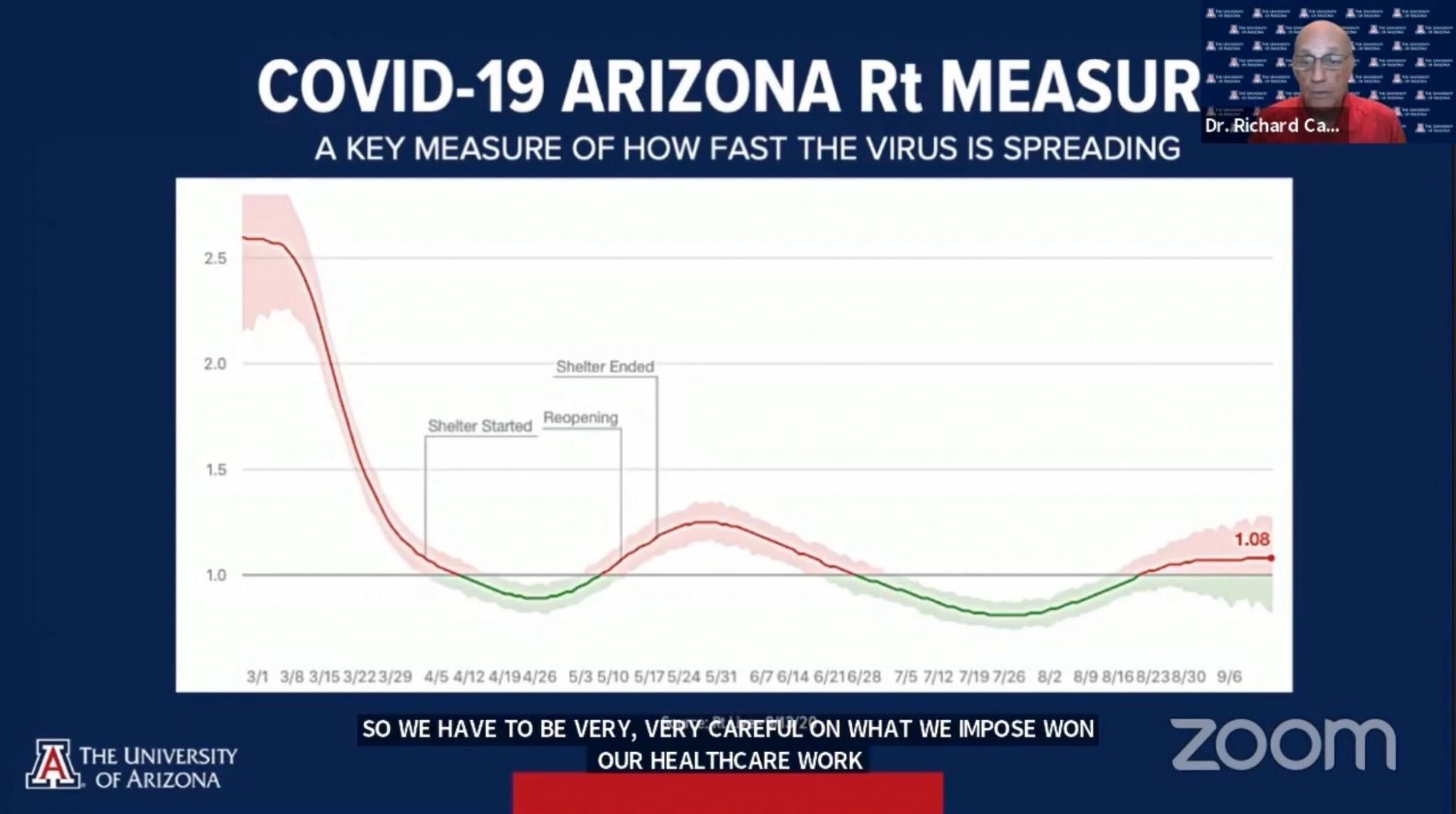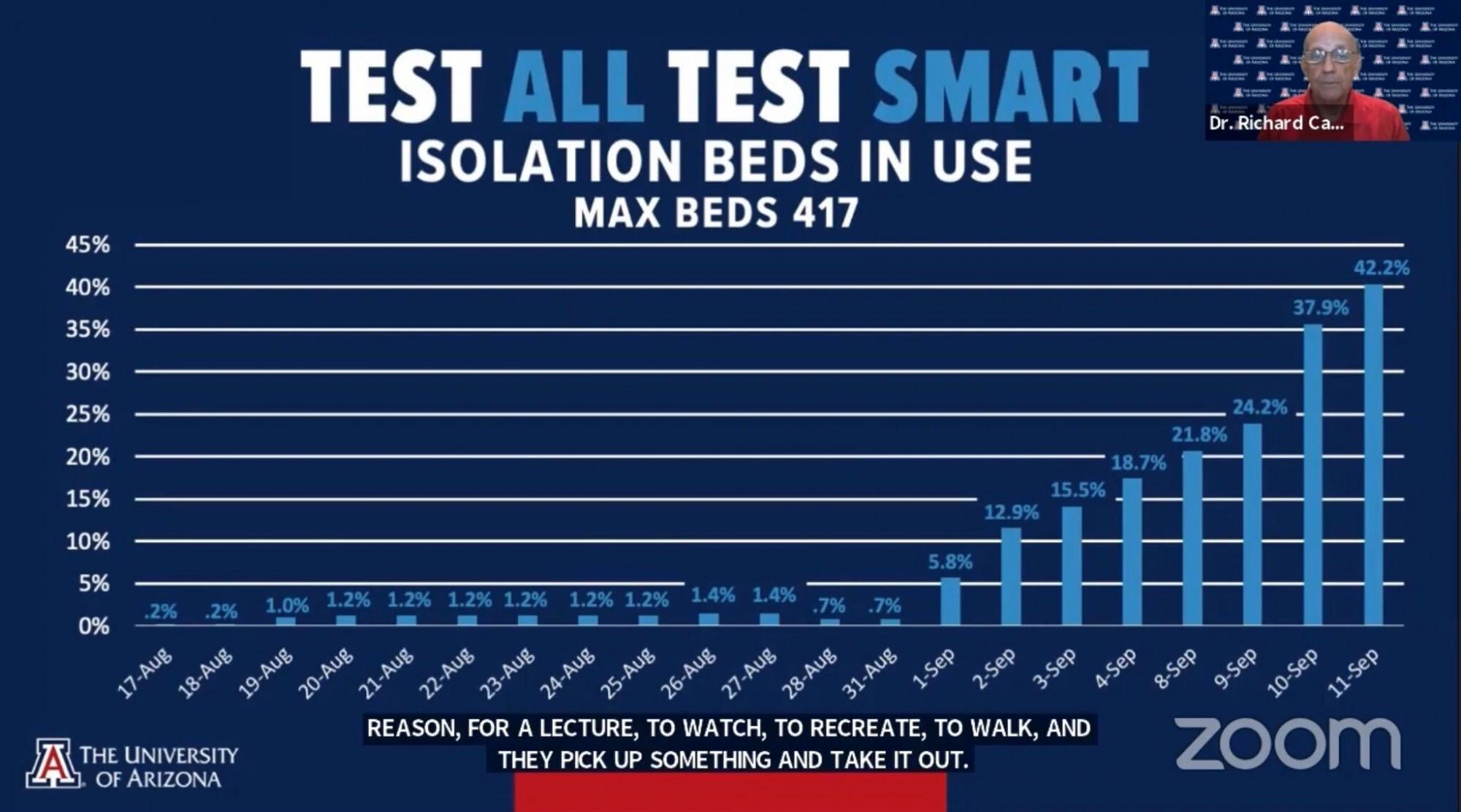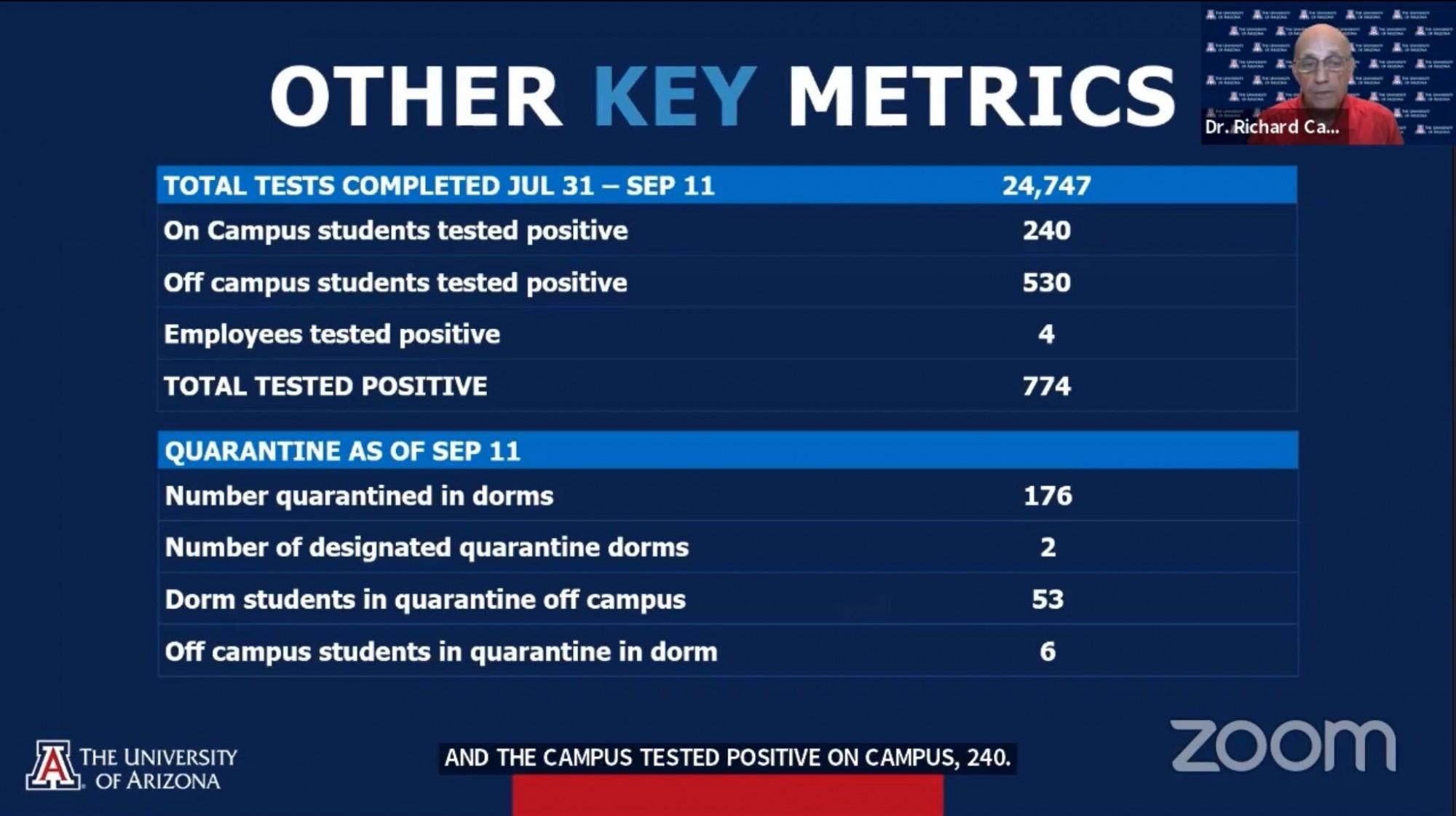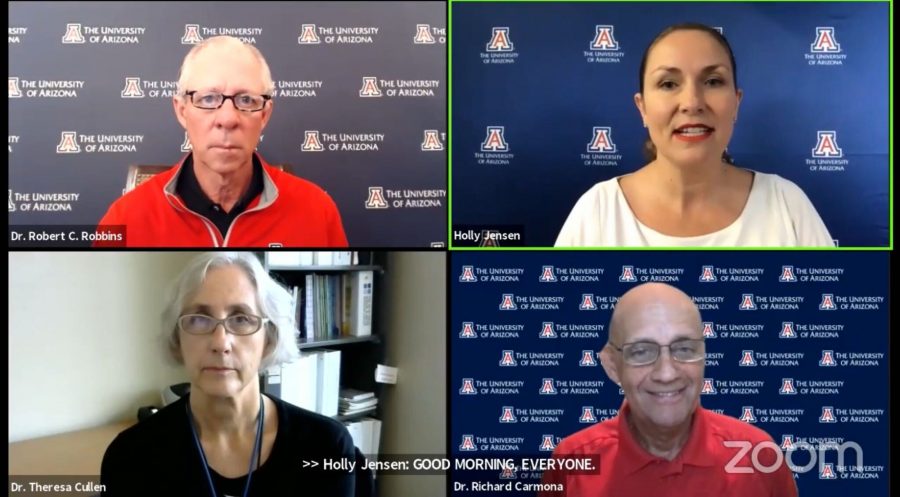The University of Arizona Reentry Task Force met Monday to announce a new shelter-in-place directive for students living on and near campus. This new recommendation comes from both the university and Pima County in response to an increase in the rate of coronavirus transmission within the last week.
UA President Dr. Robert C. Robbins began the meeting by announcing the university will continue to have essential courses in-person through Sept. 21. Some of these courses include science laboratory classes and dance studio classes.
RELATED: Arizona partners with WeWork, expanding UA Global Microcampus Network
He followed with another announcement, this time regarding an upcoming shelter-in-place recommendation that will be directed toward students living on and near campus.
“The Pima County Health Department — in concert with the University of Arizona — is recommending a 14-day shelter-in-place for students living both on and near campus, and particularly those in congregate settings, such as in high-rises, mini-dorms, apartments with more than 10 students and our panhellenic houses,” Robbins said.
Some exceptions to this shelter-in-place include individuals going to work, attending essential in-person classes and obtaining basic necessities such as food and medical care.
Both Robbins and Pima County Health Director Dr. Theresa Cullen assured that next steps will be shared with the community later today following a meeting this afternoon with county, city and UA leadership.
“Obviously, we don’t want to impede them going to their classes that are essential where they meet in person, going to get medical care and getting food. You’ll see as this rolls out later today more details about it,” Cullen said.
After expressing appreciation for Pima County and the UA’s joint cooperation in COVID-19 mitigation, Cullen explained what the team hopes to achieve with the shelter-in-place recommendation.
“What we believe is that by doing that … we will get increased compliance with those tools that are available, and if we do that, then we have the potential to ensure that the transmission that we are seeing right now will go back down,” Cullen said.
Robbins reiterated the importance of community compliance and of downloading the COVIDWatch app.
“We cannot contain or control the virus on our own,” Robbins said. “We need to continue partnering with Pima County, the City of Tucson and the broader community of which we are a part and we need everyone to do their part.”
RELATED: Arizona partners with WeWork, expanding UA Global Microcampus Network
Robbins also noted that compliance enforcement is going to be operating on a stricter level.
“Today we are going to ratchet up the warnings, the encouragement to please follow the rules,” Robbins said. “There will be certain things in addition to this last-ditch effort to ask you to follow the rules before we have to make some really drastic changes to how we’re dealing with this blatant disregard for public health measures.”
Robbins also expressed his frustration with those disregarding COVID-19 mitigation measures.
“I am telling you that I’m short of saying ‘I’m mad as hell and I’m not going to take it anymore,’ because there are only certain things that I can do, but this is part of being a good member of society, to take into the account the health of others, not just your individual health and your individual desire to go out and party,” Robbins said.
Task force Director Dr. Richard Carmona presented new data on transmission and resource utilization for the week. While ICU bed and ventilator usage in the state of Arizona have remained stagnant — at under 80% and under 30% respectively, according to the Arizona Department of Health Services — the increase in the rate of coronavirus transmission is cause for some concern.

“Our goal is to have that Rt, that transmission, less than 1.0,” Cullen said. “That means if I’m infected, I infect less than one person. We have areas right now, based on our GIS evaluation, where we’re seeing that Rt above 2.0.”
The Rt value in the state of Arizona is 1.08, according to the graph Carmona presented at the briefing.
In addition, isolation beds — provided by the university for students who test positive — are at 42.2% capacity as of Sept. 11, according to another graph provided by Carmona. This is nearly double the capacity of about a week ago on Sept. 8.

Carmona pointed out that although resources aren’t at maximum utilization, there is still cause for concern about staffing in these facilities.
“What these numbers don’t reflect,” Carmona said, “when we have the surge and they go up, is can we staff? Are there people to operate the ventilators? Are there people to be at the bedside with our patients? After going through this for six or seven months now, we have a workforce that’s getting tired, they’re getting burned out, they have mental health needs as well and so we have to be very, very careful on what we impose on our healthcare workforce who are working tirelessly and selflessly every single day to care for our fellow citizens.”
While in previous briefings, Carmona voiced concerns about the elderly and other populations vulnerable due to medical conditions, he emphasized that younger and healthier individuals weren’t out of the woods.
“Here’s something else that the president and I have just been talking about: In younger populations, we’re seeing kids who are healthy that get an infection in their heart and the heart gets a myocarditis and other organs are affected as well,” Carmona said. “So, we have to make sure we protect everybody, not just those we identify as vulnerable, because this virus is really, really a big problem for all of us, even those who are healthy.”

The Reentry Task Force’s next press briefing will take place next Monday, Sept. 21, at 10 a.m. This week’s press conference is available on the UA’s YouTube channel.
Follow Kristijan Barnjak on Twitter









